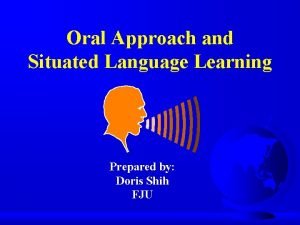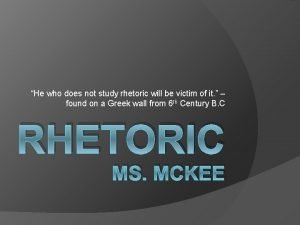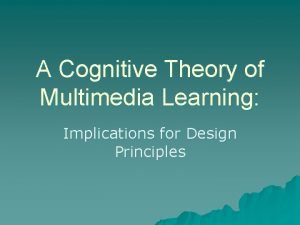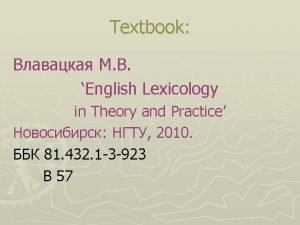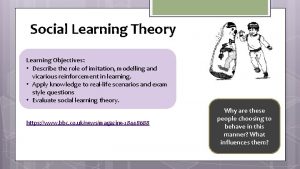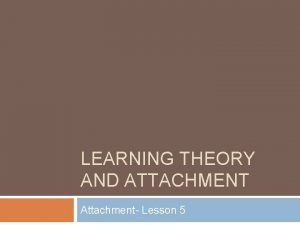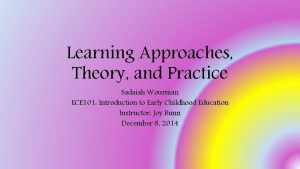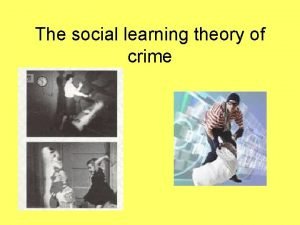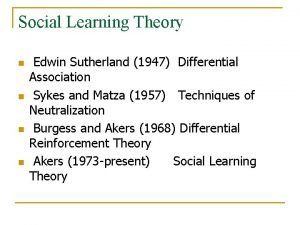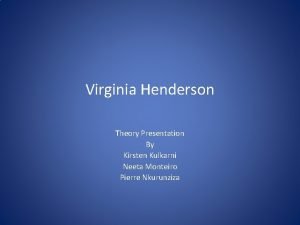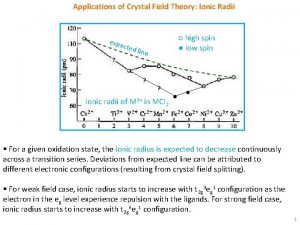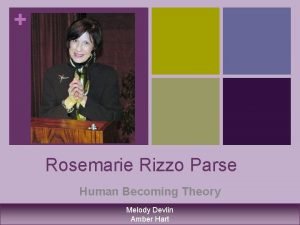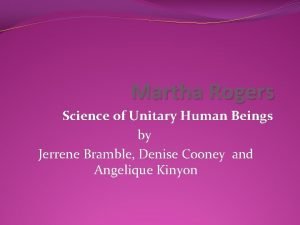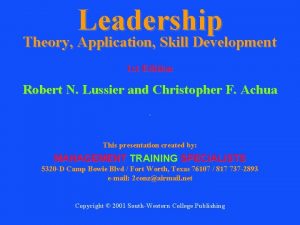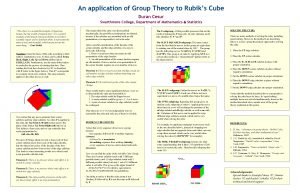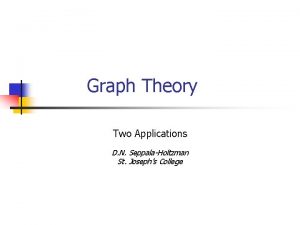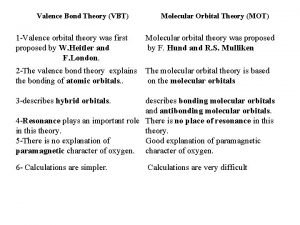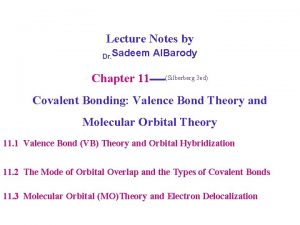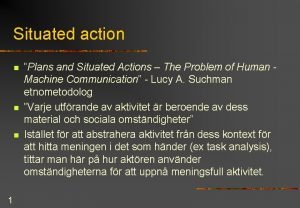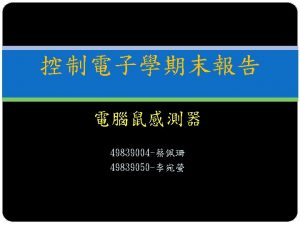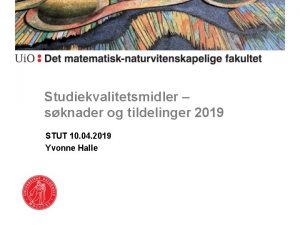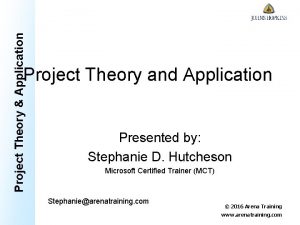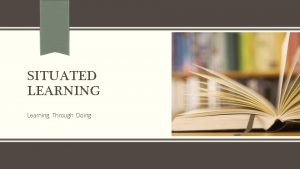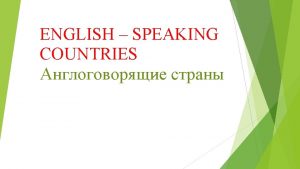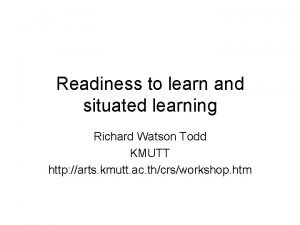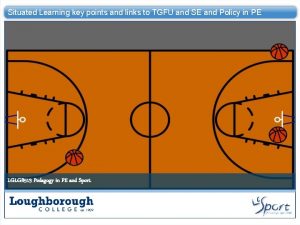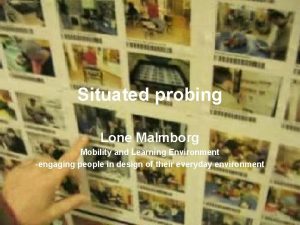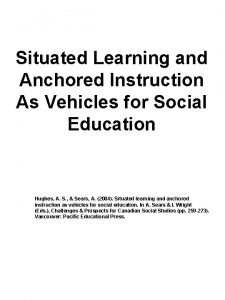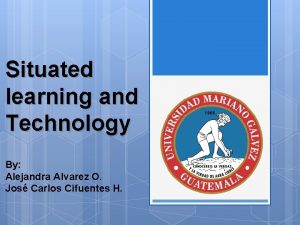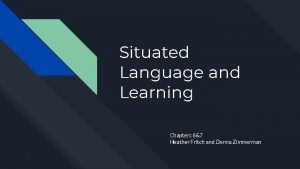English Situated Learning Theory and Application dfjhuangmail stut

















































- Slides: 49

英語情境學習 理論與應用 English Situated Learning Theory and Application 黃 大 夫 南台科大 語言中心主任 dfjhuang@mail. stut. edu. tw 1

OUTLINE • • • Introduction Theories of situated learning/teaching Characteristics of authentic activities Instructional design for SL activities Application and practice of SL Conclusion 2

INTRODUCTION (1/4) 社會建構理論架構 (Oliver, 1999)

INTRODUCTION (2/4) n • • The problems/phenomena situated learning attempts to address (Brown, Collins and Dugid, 1989): There is a mismatch between the learning situation in school and the real world situations There is a failure of knowledge to transfer Training by abstraction is of little use Learning is inherently a social phenomena 4

INTRODUCTION (3/4) • • Situated learning : as a model of learning in a community of practice (實務社群) projected by J. Lave and E. Wenger SL allows individuals to learn by socialization, visualization, and imitation Learning begins with people trying to solve problems Skills are acquired through authentic contexts and by communicating with peers and experts about those contexts 5

INTRODUCTION (4/4) • • Knowledge is located in the actions of persons and groups Knowledge evolves as individuals participate in and negotiate their way through new situations Knowing, learning and cognition are social constructions, expressed in actions of people interacting within communities Construction of meaning is tied to specific contexts and purposes 6

THEORIES OF SITUATED LEARNING/TEACHING (1/7) n Situated Cognition (情境認知) n Cognitive Apprenticeships (認知學徒;養成訓練) n Legitimate peripheral participation (周邊參與) • • Learning is naturally tied to authentic activity, context, and culture Cognitive apprenticeship provides practical steps for applying situated cognition. 7

THEORIES OF SITUATED LEARNING/TEACHING (2/7) n Situated Cognition (Brown, Collins, & Duguid, 1989) • Learning is an enculturation process Learning is a continuous, lifelong process from acting in situations Knowledge, as a product of a meaning-making process, cannot be separated from the context of its use. 學習是透過個體在參與活動中的社會互動與協作 學習來融入並適應群體的文化(enculturation; 涵化),而知識是在學與用的真實活動( authentic activity)情境中認知的,並非獨立 於情境外獨立形成的抽象概念 • • • 8

THEORIES OF SITUATED LEARNING/TEACHING (3/7) n Cognitive apprenticeship (Brown, Collins, & Duguid, 1989) : four strategies to engage students to participate in a community of practice • By beginning with a task embedded in a familiar activity it shows the students the legitimacy of their implicit knowledge and its availability as scaffolding in apparently unfamiliar tasks • By pointing to different decompositions it stresses that heuristics are not absolute but assessed with respect to a particular task 9

THEORIES OF SITUATED LEARNING/TEACHING (4/7) n Cognitive apprenticeship: • By allowing students to generate their own solution paths, it helps make them conscious creative members of the culture of problemsolving mathematicians. By enculturating students through this activity, it helps them acquire some of the culture‘s tools--a shared vocabulary and the means to discuss, reflect upon, evaluate and validate community procedures in a collaborative process. • 10


THEORIES OF SITUATED LEARNING/TEACHING (6/7) n Legitimate peripheral participation (Lave, 1988, Lave & Wenger, 1991): • • Process of how a learner engages in the activity of a sociocultural practice and becomes increasingly competent in this practice. Participation provides students to define ways of belonging to a community of practice. 12

THEORIES OF SITUATED LEARNING/TEACHING (7/7) n Legitimate peripheral participation (Lave, 1988, Lave & Wenger, 1991): • • Legitimate refers to social organization of and control over resources of the practice Peripheral is used to distinguish between new comers and old timers 學徒透過實際 作實踐並學習師傅的教導,依循 「合法周邊參與」到「充分參與」的社會化演進 歷程(從外行人到成為圈內人),透過社會實踐 的參與學習,提升個體參與實務活動的能力 作、生活、學習就在同一個情境裡,是個人、 行為、環境緊密結合為一的現實事務,稱之為「 實務社群」(Community of Practice;Co. P) 13

CHARACTERISTICS OF AUTHENTIC ACTIVITIES (REEVES ET AL, 2002) 14

INSTRUCTIONAL DESIGN FOR SL ACTIVITIES (1/6) • • Provide authentic context that reflect the way the knowledge will be used in real-life Provide multiple, authentic and motivating activities Provide access to expert performances and the modeling of processes Provide multiple roles and perspectives 15

INSTRUCTIONAL DESIGN FOR SL ACTIVITIES (2/6) • • Provide practices and training sessions Support collaborative construction of knowledge Provide coaching and scaffolding at critical times Promote reflection to enable abstractions to be formed 16

INSTRUCTIONAL DESIGN FOR SL ACTIVITIES (3/6) • • Promote answer finding and problem solving Promote articulation to enable tacit knowledge to be made explicit Provide for integrated assessment of learning within the tasks Provide use of technology/media/tools 17

INSTRUCTIONAL DESIGN FOR SL ACTIVITIES (4/6) n • • Young (1993): four tasks for the design of situated learning: Selecting the situation: select the generator set of situations, which entail complex, realistic problem spaces that afford students to be able to detect the invariant concepts in the domain Providing scaffolding: students generate problems and solutions to "crisscross the landscape of knowledge". Limit initially a novice's access to all the features of the context and then remove those constraints. " 18

INSTRUCTIONAL DESIGN FOR SL ACTIVITIES (5/6) • Determining/supporting the role of the teacher: Teachers assess the interaction of students and the environment and guide students to pay attention to important attributes of the environment • Assessing situated learning: • • • The assessment methods should focus on "the process of learning, perception, and problem solving. " Assessment must become an integrated, ongoing, and seamless part of the learning environment Assessment must provide important feedback to both teacher and students 19

INSTRUCTIONAL DESIGN FOR SL ACTIVITIES (6/6) INTERACTIVE MULTIMEDIA (Herrington & Oliver, 2000)

APPLICATION AND PRACTICE OF SL • • • Teaching methods Curricular design English learning environment English SL rooms Field trips International English Village 21

TEACHING METHODS Wang (2009) • Multimedia use • Games (guessing, etc. ) • Role playing/reader theater • Association • Mind mapping • Story telling • Realia • Rhyming Songs 22

CURRICULAR DESIGN • • Linking with learning objectives Informal as well as formal learning • • • Live DVD in computer/language labs Outdoor English environment English corner Profiling and recording situated learning activity procedures English situated activity guidebooks & self-practice handouts/e-platform Oral SL assessment e-platform 23

Live. DVD Learning System

Oral Situated Practice & Assessment e-platform 25

Situated learning assignment & test item bank (1/5) • Giving English situated assignments • Individual/group work uploaded in audio/video files or via hyperlink 1 2 可上傳音檔/影片檔/ 網路超連結 26

Situated learning assignment & test item bank (2/5) 3 • Online oral test item bank • test item for group interaction situation 27

老師端 learning assignment & test item bank (3/5) Situated 4 Checking status of assignment submission 點開可看學生繳交 狀況並進行評分 28

Situated learning assignment & test item bank (4/5) • Viewing, listening, and scoring of oral assignments 5 • Comments on students’ works 29

Situated learning assignment & test item bank (5/5) Score report of student oral practice achievement 6 30

SETTING UP ENGLISH ENVIRONMENT • • • English corner Fitted into course content Fitted into current festivals Characterizing authentic events Hands-on participation of students Highlighting school features Team work competition Faculty & Staff English contests English day 31

ENGLISH SITUATED LEARNING ROOMS • Physical setup: realia or visual reproduction • • • Second -year learning activities at TNRHES Third/fourth-year learning activities Sixth-year learning activities Computerized setup: virtual situations via panorama facilities 32











FIELD TRIPS • • • Participant-observer studies in an organic farm, aquarium, botany, museum, theme parks, etc. Learning themes and tasks well planned and embedded into course objectives English summer/winter camps • 43

INTERNATIONAL ENGLISH VILLAGE 44


Thank you! 46

REFERENCES (1/3) Barab, S. A. , Squire, K. D. , & Dueber, W. (2000). A co-evolutionary model for supporting the emergence of authenticity. Educational Technology Research and Development, 48(2), 37 -62. Bottge, B. A. , & Hasselbring, T. S. (1993). Taking word problems off the page. Educational Leadership, 50(7), 36 -38. Bransford, J. D. , Sherwood, R. D. , Hasselbring, T. S. , Kinzer, C. K. , & Williams, S. M. (1990). Anchored instruction: Why we need it and how technology can help. In D. Nix & R. Spiro (Eds. ), Cognition, education and multimedia: Exploring ideas in high technology (pp. 115141). Hillsdale, NJ: Lawrence Erlbaum. Bransford, J. D. , Vye, N. , Kinzer, C. , & Risko, V. (1990). Teaching thinking and content knowledge: Toward an integrated approach. In B. F. Jones & L. Idol (Eds. ), Dimensions of thinking and cognitive instruction (pp. 381 -413). Hillsdale, NJ: Lawrence Erlbaum Associates. Brown, J. S. , Collins, A. , & Duguid, P. (1989). Situated cognition and the culture of learning. Educational Researcher, 18(1), 32 -42. Cognition and Technology Group at Vanderbilt. (1990 a). Anchored instruction and its relationship to situated cognition. Educational Researcher, 19(6), 2 -10. Cognition and Technology Group at Vanderbilt. (1990 b). Technology and the design of generative learning environments. Educational Technology, 31(5), 34 -40. Collins, A. , Brown, J. S. , & Newman, S. E. (1990). Cognitive apprenticeship: Teaching the crafts of reading, writing, and mathematics. In L. B. Resnick (Ed. ), Knowing, learning, and instruction: Essays in honor of Robert Glaser (pp. 453 -494). Hillsdale, NJ: Lawrence Erlbaum. 47

REFERENCES (2/3) Cronin, J. C. (1993). Four misconceptions about authentic learning. Educational Leadership, 50(7), 78 -80. Duchastel, P. C. (1997). A Web-based model for university instruction. Journal of educational technology systems, 25(3), 221 -228. Gordon, R. (1998). Balancing real-world problems with real-world results. Phi Delta Kappan, 79, 390 -393. Herrington, J. , & Herrington, A. (1998). Authentic assessment and multimedia: How university students respond to a model of authentic assessment. Higher Education Research and Development, 17(3), 305 -322. Jonassen, D. (1991). Evaluating constructivistic learning. Educational Technology, 31(9), 28 -33. Lave, J. (1988). Cognition in practice: Mind, mathematics, and culture in everyday life. Cambridge, UK: Cambridge University Press. Lave, J. , & Wenger, E. (1991). Situated learning: Legitimate peripheral participation. Cambridge: Cambridge University Press. Lebow, D. , & Wager, W. W. (1994). Authentic activity as a model for appropriate learning activity: Implicationsfor emerging instructional technologies. Canadian Journal of Educational Communication, 23(3), 231 -144. Myers, S. (1993). A trial for Dmitri Karamazov. Educational Leadership, 50(7). Oliver, R. , & Omari, A. (1999). Using online technologies to support problem based learning: Learners responses and perceptions. Australian Journal of Educational Technology, 15(15879). 48

REFERENCES (3/3) Reeves, T. C. , Herrington, J. , & Oliver, R. (2002). Authentic activities and online learning. In A. Goody, J. Herrington & M. Northcote (Eds. ), Quality conversations: Research and Development in Higher Education, Volume 25 (pp. 562 -567). Jamison, ACT: HERDSA. Reeves, T. C. , & Okey, J. R. (1996). Alternative assessment for constructivist learning environments. In B. G. Wilson (Ed. ), Constructivist learning environments: Case studies in instructional design (pp. 191 -202). Englewood Cliffs, NJ: Educational Technology Publications. Resnick, L. (1987). Learning in school and out. Educational Researcher, 16(9), 13 -20. Sternberg, R. J. , Wagner, R. K. , & Okagaki, L. (1993). Practical intelligence: The nature and role of tacit knowledge in work and at school. In J. M. Puckett & H. W. Reese (Eds. ), Mechanisms of everyday cognition (pp. 205 -227). Hillsdale, NJ: Lawrence Erlbaum Associates. Wang, R. -K. (2009). Application of situated learning in elementary school English teaching. Taipei County Education, 69(87 -91). Winn, W. (1993). Instructional design and situated learning: Paradox or partnership. Educational Technology, 33(3), 16 -21. Young, M. F. (1993). Instructional design for situated learning. Educational Technology Research and Development, 41(1), 43 -58. Young, M. F. (1995). Assessment of situated learning using computer environments. Journal of Science Education and Technology, 4(1), 89 -96. Young, M. F. , & Mc. Neese, M. (1993). A situated cognition approach to problem solving with implications for computer-based learning and assessment. In G. Salvendy & M. J. Smith (Eds. ), Human-computer interaction: Software and hardware interfaces. New York: Elsevier Science Publishers. 49
 Situated language learning
Situated language learning What is discourse analysis
What is discourse analysis Situated and invented ethos
Situated and invented ethos Scotland is situated
Scotland is situated Principleu
Principleu Cuadro comparativo e-learning y b-learning
Cuadro comparativo e-learning y b-learning Spoken english and broken english g.b. shaw summary
Spoken english and broken english g.b. shaw summary Difference between british and american english
Difference between british and american english British english vs american english
British english vs american english Spoken english and broken english summary
Spoken english and broken english summary Stressed syllable motorway
Stressed syllable motorway Fees mafi application in english
Fees mafi application in english Inductive and analytical learning
Inductive and analytical learning In analytical learning hypothesis fits
In analytical learning hypothesis fits Lazy learner and eager learner
Lazy learner and eager learner Deep learning approach and surface learning approach
Deep learning approach and surface learning approach Lsfas
Lsfas English lexicology theory and practice
English lexicology theory and practice Social learning theory vs operant conditioning
Social learning theory vs operant conditioning Outline and evaluate the learning theory of attachment
Outline and evaluate the learning theory of attachment Learning approaches theory and practice
Learning approaches theory and practice Social learning theory and cybercrime
Social learning theory and cybercrime Sutherland 1947
Sutherland 1947 Virginia henderson theory example
Virginia henderson theory example Splitting orbital
Splitting orbital Piaget theory
Piaget theory Johnson's behavioral system model in nursing practice
Johnson's behavioral system model in nursing practice Crystal field effect on ionic radii
Crystal field effect on ionic radii Symbols of the human becoming theory
Symbols of the human becoming theory Nurse novice to expert
Nurse novice to expert Theory of martha rogers
Theory of martha rogers Health as expanding consciousness example
Health as expanding consciousness example Leadership theory application & skill development
Leadership theory application & skill development Rubik's cube group theory
Rubik's cube group theory Application of graph theory
Application of graph theory Orlando's deliberative nursing process theory
Orlando's deliberative nursing process theory Trait theory of leadership
Trait theory of leadership Plate tectonics vs continental drift
Plate tectonics vs continental drift Continental drift vs plate tectonics
Continental drift vs plate tectonics Neo classical organizational theory
Neo classical organizational theory Motivation in group formation
Motivation in group formation Employees who are strongly power-motivated are driven
Employees who are strongly power-motivated are driven Theory of chromatography
Theory of chromatography Title theory and lien theory
Title theory and lien theory Y and y management
Y and y management Game theory and graph theory
Game theory and graph theory Vbt theory
Vbt theory Slidetodoc.com
Slidetodoc.com Theory x and theory y
Theory x and theory y Valence bond theory and molecular orbital theory
Valence bond theory and molecular orbital theory
